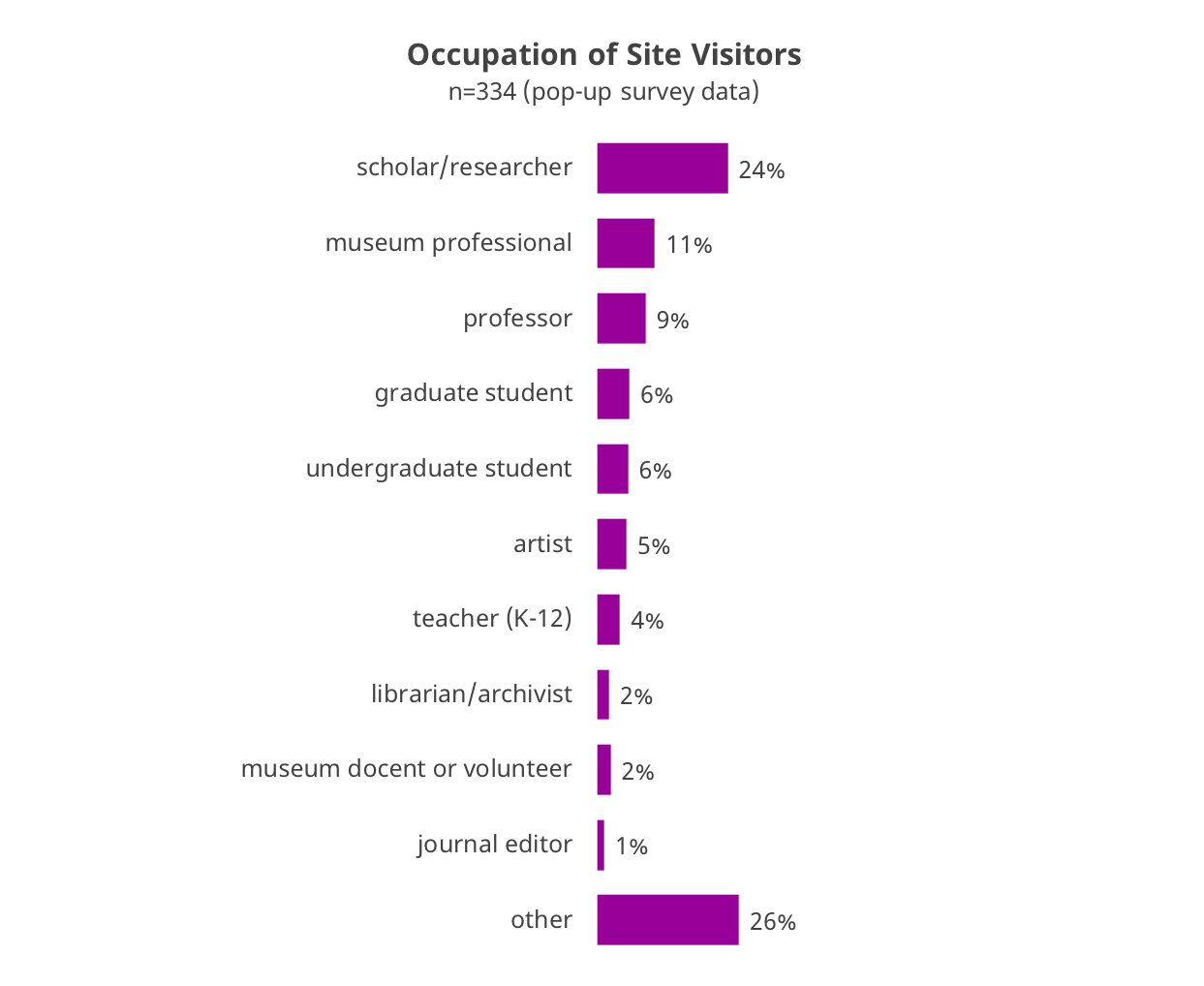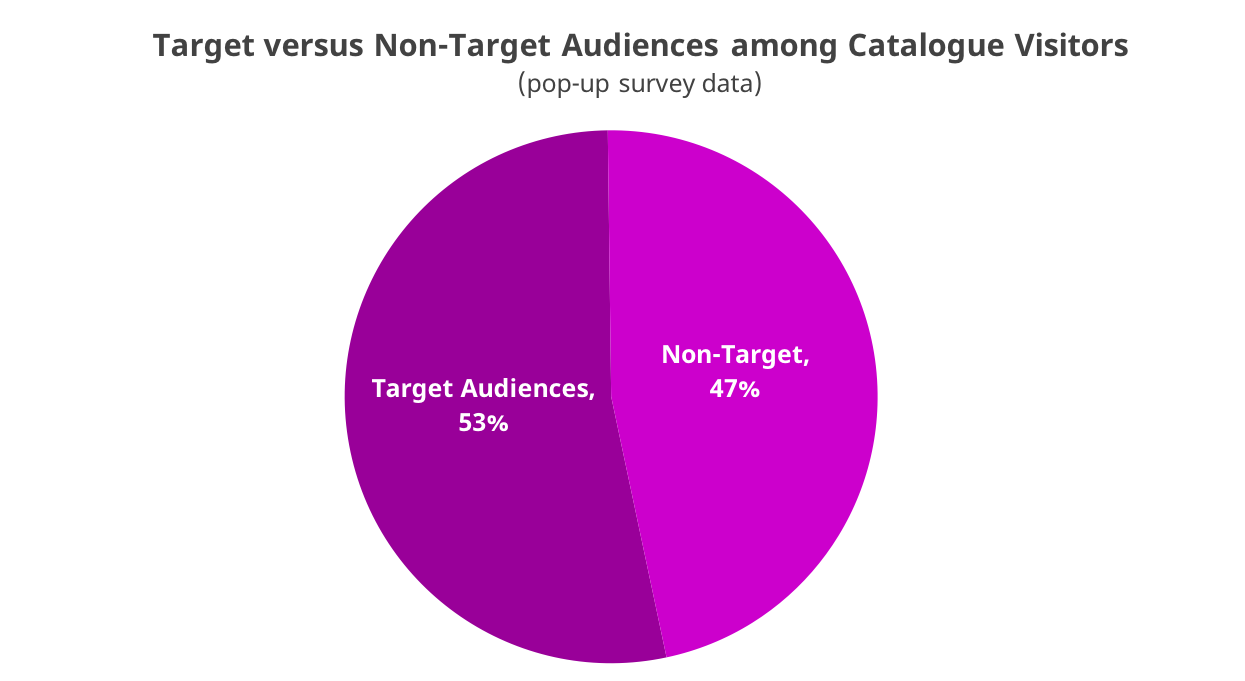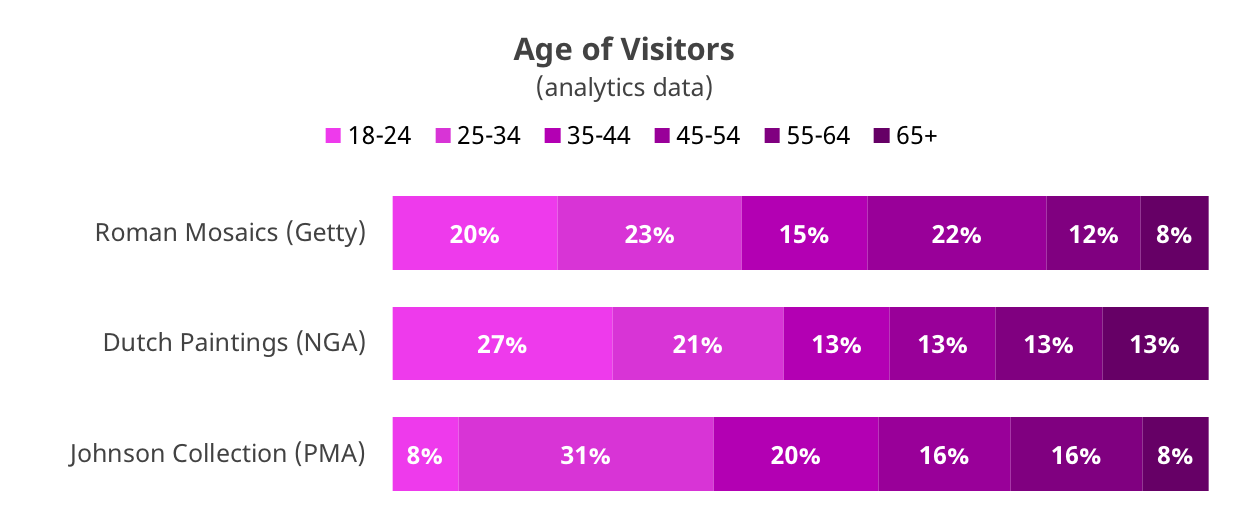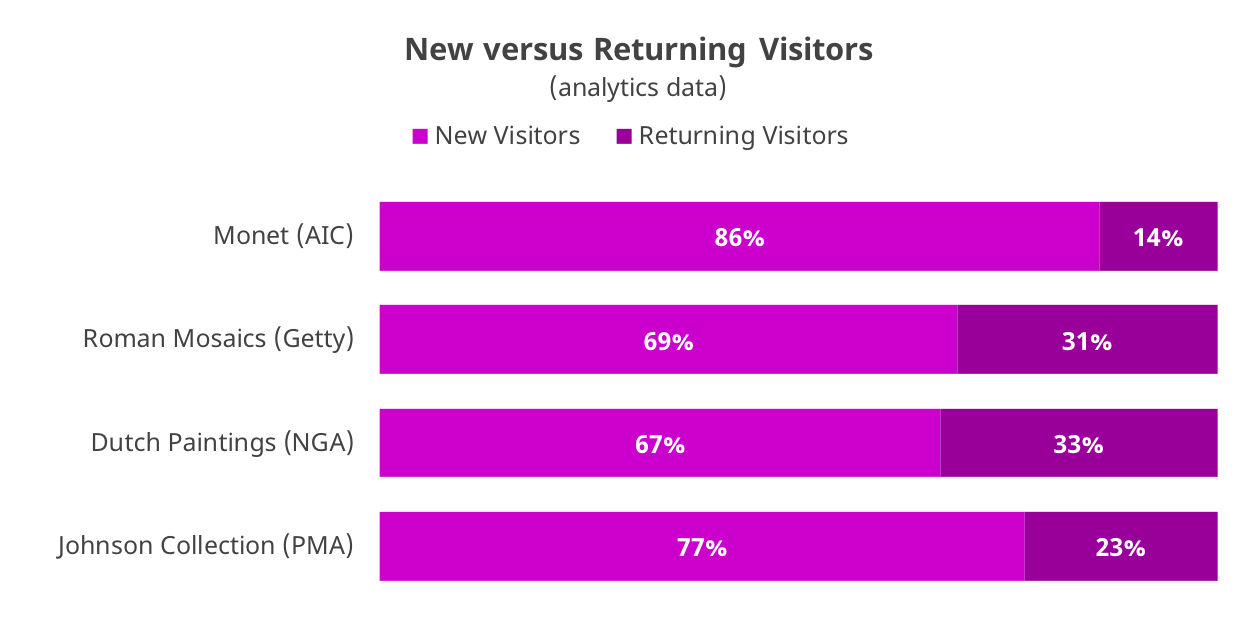Who is using the catalogues?
Data from the pop-up survey and web analytics suggest the catalogues are reaching a wide audience, and not just the target audience for whom they were designed. The intended audience for the catalogues includes scholars, curators, professors, and others with a professional interest in art history. While this audience accounts for some of the online traffic to these catalogues, a surprising number of survey respondents did not fit within these categories.
In fact, after recoding occupation data into target/non-target groups, only about half of the survey respondents selected or wrote in a profession that aligns with the target audience for the catalogues. The remaining half included teachers at the K-12 level, artists, and many who simply identified as an art enthusiast in their write-in responses. Target audiences seem to be visiting the AIC catalogues in higher percentages than the NGA catalogues. The integration of NGA’s catalogues with the larger museum website may be one reason for the more diverse user base.
(as defined for this study)
- Scholars/researchers
- Museum professionals and volunteers
- Professors
- Graduate and undergraduate students
- Librarians/archivists
- Journal editors
The pop-up survey also allowed visitors to identify as a visitor to the museum whose catalogue they were viewing, a member of that museum, or a staff member. Ten percent of the catalogue’s users identified as staff, which may be lower than actual percentages if staff tend to ignore the pop-up survey (a scenario that seems likely). The catalogues therefore seem to have important value internally to the museums as well as externally.
A third of the pop-up survey participants identified as visitors to or members of that institution. The remaining 57% did not have any specific affiliation with the museum. The catalogues therefore seem to be used by a wide variety of visitors, including those who might have in-person experience with the collections and those who might only encounter them online. (See also Appendix A: Further Analyses — Users’ Relationships to the Museum by Institution.)
Data from the web analytics review suggests the ages of users is also varied. A common concern for digital publications is that older generations will eschew them in favor of traditional print resources. Millennials, roughly defined as those age 34 and under, do account for a large percentage of visitors to the catalogues, but not so great a portion that older generations are not well-represented.
Finally, catalogue users are more likely to be new visitors than returning visitors. The NGA’s Dutch Paintings catalogue receives the highest percentage of returning visitors, at 33%, and the Getty’s Roman Mosaics catalogue follows closely behind.
Return visitation is a difficult metric to interpret, because it can encompass a wide range of behaviors. Returning users might be interpreted as visitors with a sustained interest in the catalogue—for example, a scholar referring back to it repeatedly over the course of a research project or a professor who frequently uses a catalogue to source images for lectures. It’s not possible to tell, however, whether a user is returning for the second time or the hundredth time. While museums might like to see people returning frequently to their catalogues, new visitors are also desirable and indicate that the catalogues are reaching new audiences.




